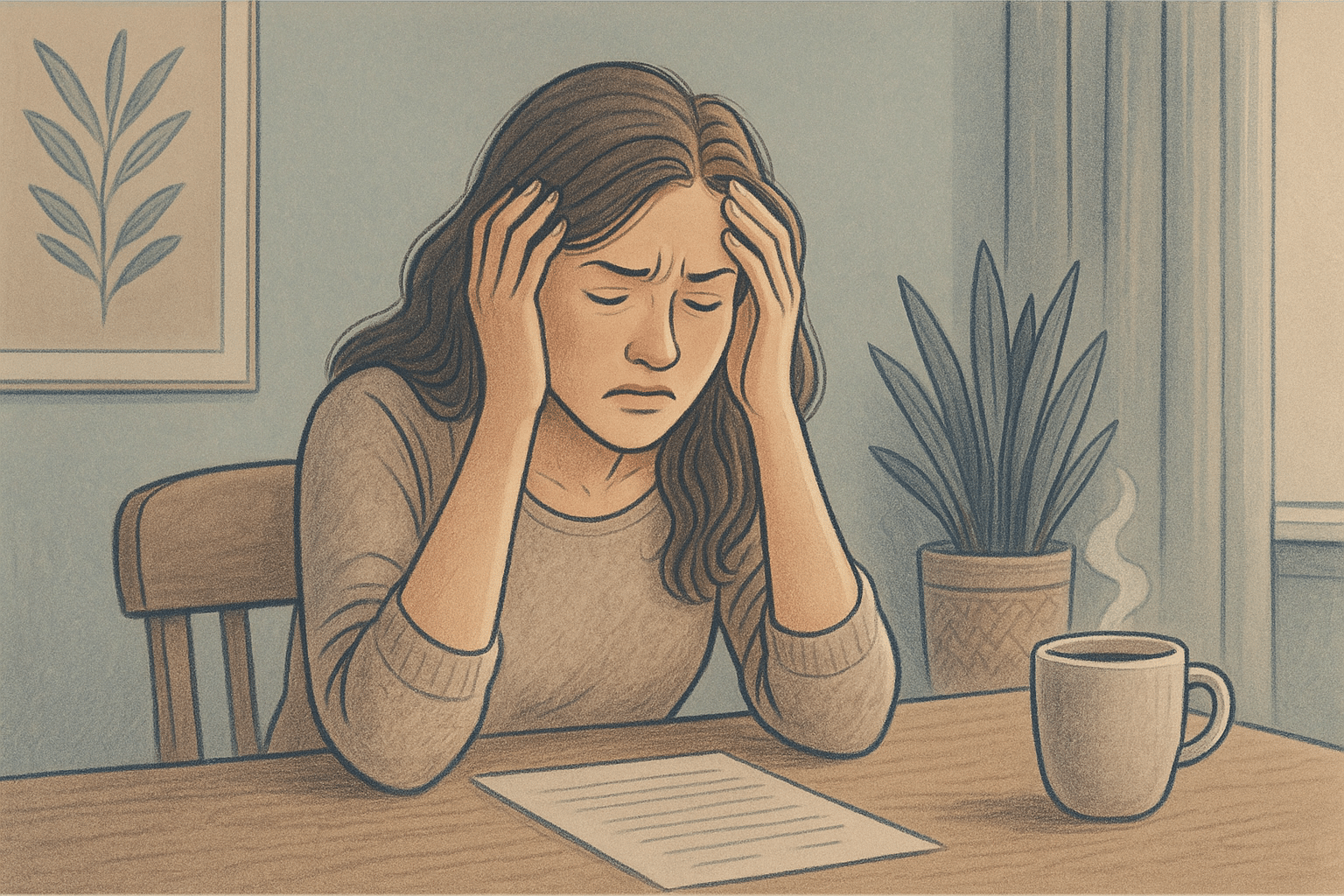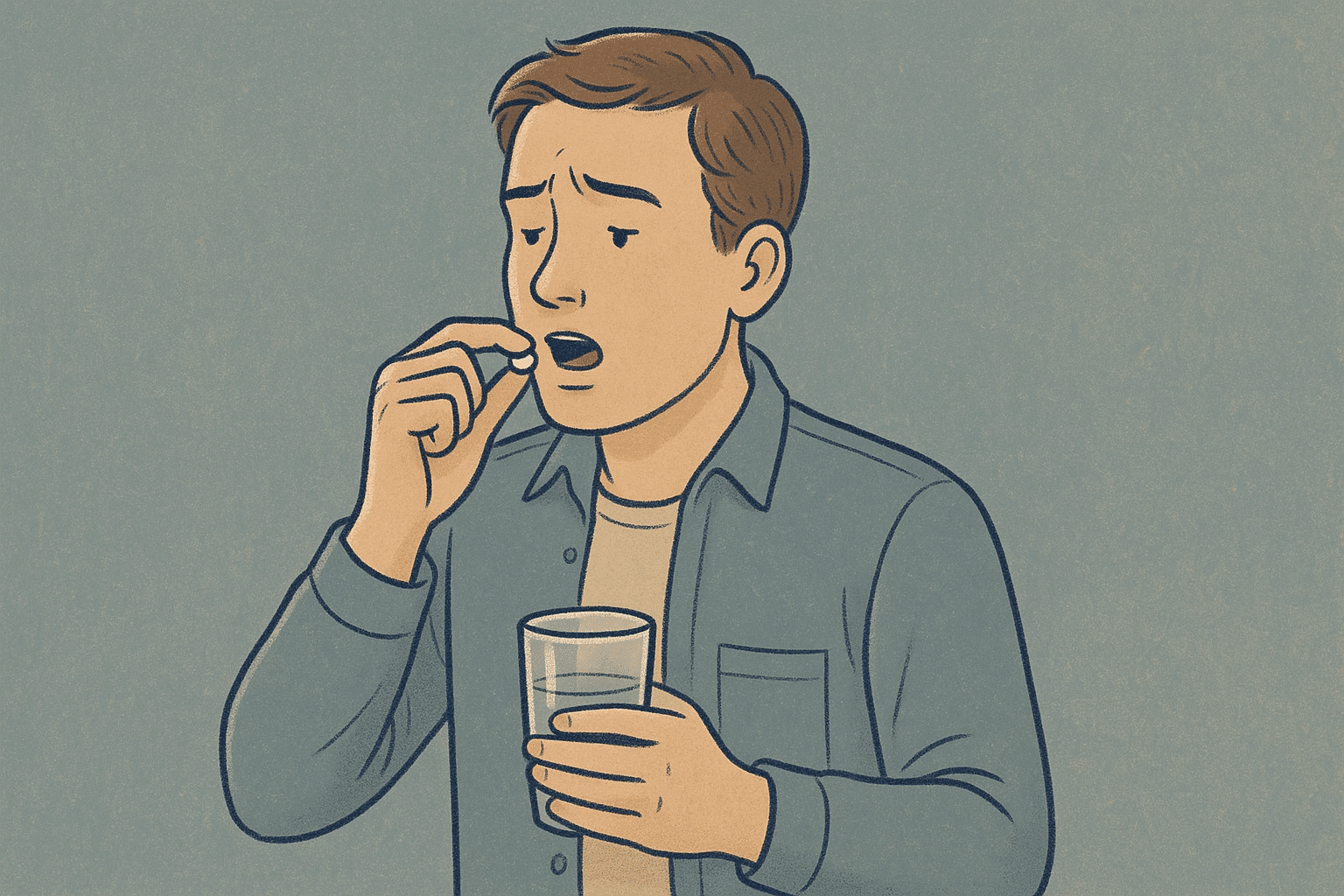Key Takeaways
- Brief psychotic disorder and schizophreniform disorder differ primarily in duration. Brief psychotic disorder lasts 1 day to 1 month, while schizophreniform persists for 1–6 months.
- Both conditions share similar symptoms including delusions, hallucinations, and disorganized thinking, but require different diagnostic criteria.
- Brief psychotic disorder is frequently triggered by severe stress or trauma, while schizophreniform may indicate a potential transition to schizophrenia in some cases.
- Treatment approaches for both conditions typically involve a combination of medication, therapy, and support, but differ in duration and intensity.
- A Mission For Michael offers comprehensive assessment and individualized treatment for both brief psychotic disorder and schizophreniform disorder. Our multidisciplinary approach combines evidence-based medications, specialized psychotherapy, and varying levels of care from residential to intensive outpatient programs.
What Are These Disorders?
Brief Psychotic Disorder Basics
Brief psychotic disorder is characterized by a sudden onset of psychotic symptoms that last for a short period. This condition typically develops in response to extreme stress or trauma, making it somewhat unique among psychotic disorders. The symptoms appear rapidly, often seemingly out of nowhere, and can be frightening for both the individual experiencing them and their loved ones.
What makes brief psychotic disorder distinct is its temporary nature in which, by definition, symptoms resolve within one month. Many individuals experience just a single episode in their lifetime, particularly if the triggering stressor is a one-time event. We often see this disorder in people with no prior history of mental health conditions, which can make the experience especially disorienting.
Schizophreniform Disorder Explained
Schizophreniform disorder occupies a middle ground between brief psychotic disorder and schizophrenia. This condition presents with symptoms virtually identical to schizophrenia but lasts for a shorter period, specifically between one and six months.
Unlike brief psychotic disorder, schizophreniform isn’t always triggered by an identifiable stressor and may develop more gradually.
How They Differ From Schizophrenia
Both brief psychotic disorder and schizophreniform disorder differ from schizophrenia primarily in their duration. Schizophrenia is diagnosed when psychotic symptoms persist for at least six months, including at least 1 month of active-phase symptoms (delusions, hallucinations, disorganized speech, etc.). The condition is typically chronic and requires ongoing management throughout a person’s life.
While brief psychotic disorder rarely progresses to schizophrenia, schizophreniform disorder represents a potential transition point.
Founded in 2010, A Mission For Michael (AMFM) offers specialized mental health care across California, Minnesota, and Virginia. Our accredited facilities provide residential and outpatient programs, utilizing evidence-based therapies such as CBT, DBT, and EMDR.
Our dedicated team of licensed professionals ensures every client receives the best care possible, supported by accreditation from The Joint Commission. We are committed to safety and personalized treatment plans.
Comparison Table: The Main Differences
| Feature | Brief Psychotic Disorder | Schizophreniform Disorder |
| Duration | 1 day to less than 1 month | 1 month to less than 6 months |
| Symptom Onset | Sudden, often in direct response to extreme stress or trauma | May be sudden or gradual; not always linked to a clear stressor |
| Core Symptoms | At least one: delusions, hallucinations, disorganized speech, or grossly disorganized/catatonic behavior | At least two: delusions, hallucinations, disorganized speech, grossly disorganized/catatonic behavior, or negative symptoms (e.g., flat affect, avolition) |
| Negative Symptoms | Rare or mild (e.g., reduced emotional expression, social withdrawal) | More common and can be prominent |
| Cognitive Symptoms | Usually mild or absent | May include attention, memory, or executive function difficulties |
| Trigger/Precipitant | Frequently follows a major stressor or trauma | Often no clear trigger; genetic and neurobiological factors more prominent |
| Return to Baseline | Full return to premorbid functioning after episode | May return to baseline, but risk of progression to schizophrenia exists |
| Age of Onset | Any age; often early adulthood or older adults after major life events | Most common in late adolescence to early adulthood (18–35 years) |
| Genetic Association | Weak; environmental triggers dominate | Stronger; family history of psychosis increases risk |
| Treatment | Short-term antipsychotics, supportive therapy, stress management, brief hospitalization if needed | Antipsychotics (often longer duration), structured therapy (CBTp, family therapy), possible longer hospitalization, ongoing monitoring |
| Prognosis | Excellent with full recovery in most cases | Variable; good prognosis if rapid onset, good premorbid functioning, and confusion present; otherwise, risk of chronicity |
| Hospitalization | Usually short-term, if required | May require longer inpatient stay depending on severity |
Symptom Overview
Shared Psychotic Symptoms
Both brief psychotic disorder and schizophreniform disorder share core psychotic symptoms. These include hallucinations (perceiving things that aren’t present), delusions (fixed false beliefs), disorganized speech, and abnormal psychomotor behavior. In both conditions, these symptoms can be severe enough to significantly impair functioning and may require immediate intervention to ensure safety.
Reality testing is impaired in both disorders, meaning individuals have difficulty distinguishing between what’s real and what isn’t. This can lead to profound confusion, fear, and distress. The intensity of these experiences shouldn’t be underestimated, even in brief psychotic disorder, the symptoms can be just as severe as those in longer-lasting conditions.
Unique Features of Brief Psychotic

Brief psychotic disorder often has a more obvious connection to stressors or traumatic events.
The symptoms frequently appear in direct response to identifiable triggers, such as the death of a loved one, a natural disaster, or another traumatic experience. This connection to external events gives brief psychotic disorder a somewhat different character than other psychotic conditions.
Another distinguishing feature is the often sudden onset and equally rapid resolution of symptoms. Unlike the gradual development sometimes seen in schizophreniform disorder, brief psychotic episodes can emerge almost overnight. With appropriate support and removal of stressors, many individuals return to their baseline functioning relatively quickly.
Schizophreniform-Specific Symptoms
Schizophreniform disorder more closely mirrors the symptom profile of schizophrenia, including potential negative symptoms like reduced emotional expression, decreased motivation, and social withdrawal. These negative symptoms are less commonly prominent in brief psychotic disorder. The presence of these symptoms may indicate a higher risk of progression to schizophrenia.
Cognitive symptoms, including difficulties with attention, memory, and executive functioning, may also be more pronounced in schizophreniform disorder. These cognitive challenges can persist even when other symptoms improve, creating ongoing functional difficulties that require targeted support and rehabilitation.
Symptom Severity Differences
While both conditions can cause significant distress, there are sometimes differences in symptom severity and impact. Brief psychotic disorder may present with more dramatic and florid positive symptoms (hallucinations and delusions), particularly when triggered by extreme stress. The acute nature of the episode can make symptoms appear more intense but also more responsive to intervention.
Schizophreniform disorder may show a more balanced mix of positive and negative symptoms, similar to the pattern seen in schizophrenia. This broader symptom profile can create more pervasive functional impairment across multiple domains of life.
Causes and Triggers
Brief Psychotic Triggers
Brief psychotic disorder often emerges in direct response to significant stressors or traumatic events. These triggers can include the death of a loved one, experiencing or witnessing violence, natural disasters, or major life disruptions.
The clear connection to external events differentiates brief psychotic disorder from other psychotic conditions and provides an important focus for therapeutic intervention.
Schizophreniform Risk Factors
Schizophreniform disorder typically has less obvious triggering events and more complex risk factors. While stress can play a role, the condition often emerges from a combination of biological vulnerability and environmental influences.
Family history of psychotic disorders increases the risk for schizophreniform disorder, pointing to genetic contributions. Neurobiological factors, including abnormalities in brain structure and neurotransmitter systems, may also play a significant role. These biological underpinnings help explain why schizophreniform disorder sometimes progresses to schizophrenia despite appropriate treatment.
Genetic Considerations
The genetic component differs significantly between these disorders. Brief psychotic disorder shows weaker genetic associations, with environmental triggers playing the dominant role in most cases.
This explains why many individuals with brief psychotic disorder have no family history of psychotic illnesses and may never experience another episode if the triggering stressor doesn’t recur. By contrast, schizophreniform disorder shows stronger genetic links, similar to those seen in schizophrenia.
Treatment Approaches
Medication Options

Antipsychotic medications form the foundation of acute treatment for both disorders, helping to reduce hallucinations, delusions, and disorganized thinking.
For brief psychotic disorder, shorter courses of medication are typically sufficient, often at lower doses, with gradual tapering as symptoms resolve.
For schizophreniform disorder, medication approaches more closely resemble those used for schizophrenia, though with ongoing assessment of the need for continued treatment. Second-generation (atypical) antipsychotics are often preferred due to their more favorable side effect profiles. Adjunctive medications may be added to address specific symptoms like anxiety, depression, or sleep disturbances that commonly co-occur with psychotic symptoms.
Therapy Effectiveness
Psychotherapy plays a crucial role in treatment for both disorders. For brief psychotic disorder, therapy often focuses on processing the triggering stressor, developing coping strategies, and preventing future episodes. Supportive therapy, crisis intervention, and stress management techniques are particularly valuable during the acute phase and early recovery.
For schizophreniform disorder, more structured approaches like Cognitive Behavioral Therapy for psychosis (CBTp) help individuals understand and manage their symptoms, challenge delusions, and develop coping strategies for hallucinations. Family therapy is especially important for both conditions, as it helps loved ones understand the disorder and learn how to provide effective support.
Hospitalization Guidelines
The need for hospitalization varies between these disorders and among individuals. Brief psychotic disorder often requires short-term hospitalization during the acute phase, particularly when there are safety concerns or when the home environment contains the triggering stressor. Once the immediate crisis stabilizes, transition to intensive outpatient treatment is often appropriate.
Schizophreniform disorder may require longer hospitalization until symptoms are sufficiently controlled and a comprehensive outpatient treatment plan is established. The decision for inpatient treatment considers factors like symptom severity, risk of harm to self or others, ability to care for basic needs, and available support systems.
Treatment Duration Differences
Treatment duration naturally mirrors the duration of the disorders themselves. Brief psychotic disorder typically requires acute intervention followed by short-term follow-up, usually lasting a few months. The focus quickly shifts from symptom management to relapse prevention and processing the psychological impact of the episode.
Schizophreniform disorder demands more extended treatment, often continuing beyond the resolution of acute symptoms to prevent relapse and progression to schizophrenia. This includes longer medication trials, more comprehensive rehabilitation services, and ongoing monitoring for at least 6–12 months.
Distinguishing Between Disorders: Expert Care at AMFM
Understanding the critical differences between brief psychotic disorder and schizophreniform disorder is essential for accurate diagnosis and effective treatment. At A Mission For Michael, our comprehensive diagnostic process ensures accurate identification of each condition, allowing us to tailor treatment approaches appropriately.
If you’re experiencing the acute stress-related symptoms of brief psychotic disorder or the more complex presentation of schizophreniform disorder, our multidisciplinary teams across California, Virginia, and Washington provide evidence-based care combining medication management, psychotherapy, and supportive services.

Our modern facilities provide all the services and support you need to recover.
Early intervention is crucial for both conditions, and we emphasize the importance of prompt professional evaluation when psychotic symptoms emerge. Our varying levels of care, from residential treatment to intensive outpatient programs, ensure that each individual receives the appropriate intensity of support for their specific situation, maximizing the potential for full recovery.
Frequently Asked Questions
Can brief psychotic disorder turn into schizophrenia?
While technically possible, brief psychotic disorder rarely evolves into schizophrenia. By definition, brief psychotic disorder resolves within one month, and most individuals who experience complete recovery within this timeframe do not later develop chronic psychotic conditions. The risk is higher when there’s no obvious triggering stressor or strong family history of schizophrenia, but progression remains the exception rather than the rule.
How common are these disorders compared to schizophrenia?
Both disorders are less common than schizophrenia. Brief psychotic disorder affects approximately 1–4 people per 100,000 annually, while schizophreniform disorder has an estimated prevalence of about 0.07% of the population. In comparison, schizophrenia affects approximately 0.5–1% of the population worldwide, highlighting the relatively rare nature of these shorter-duration psychotic conditions.
Can stress alone trigger these disorders?
For brief psychotic disorder, extreme stress or trauma can indeed be the primary trigger, particularly in vulnerable individuals. The connection between severe stressors and brief psychotic episodes is well-established. For schizophreniform disorder, stress typically plays a contributing role rather than serving as the sole cause, usually developing from a combination of genetic predisposition, neurobiological factors, and environmental stressors.
Do these disorders affect different age groups?
Brief psychotic disorder can affect people of any age, as it’s primarily triggered by stressful events that can occur at any life stage, though it may be more common in early adulthood and older adults experiencing significant life traumas. Schizophreniform disorder most commonly emerges in late adolescence and early adulthood (typically between ages 18–35), with peak onset for men earlier than women.
Is medication always necessary for these disorders?
Most clinical guidelines recommend antipsychotic medication as first-line treatment for active psychotic symptoms in both disorders. These medications provide relatively rapid relief from distressing symptoms like hallucinations and paranoia. At A Mission for Michael, we practice interactive decision-making around medication, ensuring patients understand both the benefits and potential side effects. We also incorporate numerous non-pharmacological approaches, including therapy, stress reduction, social support, and environmental modifications to complement medication when used.






